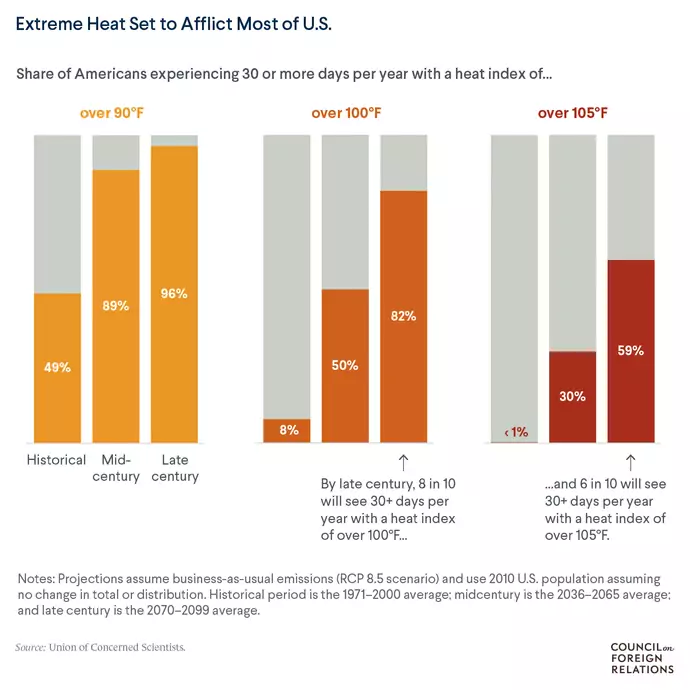
An Overheating Planet
119 Degrees Fahrenheit was painted in 2021 when the temperature in Portland reached record highs. Sweating through July and August changed the way I looked at summer and the many trips I used to take to blistering cities nearer the equator. No longer did I feel superior when hearing how Arizona, New York, and Southern California suffered through heat waves. My northwest home, now bathed in sunlight, seemed worse off with polluted air from wildfires forcing me to stay inside. Since my house wasn’t air-conditioned and the air was not purified, all I could do was stay indoors and pray for cooler weather.
This year, I’m better prepared with two room air conditioners and two air purifiers humming in the background. Though the constant sound of their motors is unnerving and I don’t like having to keep windows closed, I am reluctantly getting used to the fact that Earth’s temperature will continue to go up.
I suffer along with most of the Northern Hemisphere from China to North Africa to the United States and acknowledge the change in temperature and weather patterns as the new norm. Temperatures will rise and storms will become more violent. Long-lasting heatwaves and droughts will dominate my summer months. Rather than look forward to fun days at the beach, I will seek shelter from damage from the sun’s rays. Heatwaves are dangerous to health and well-being.
How anyone can still deny global warming is beyond imagination. It is forty years since a small group of scientists met at the world’s first climate conference in Geneva raising the alarm about global warming. Though over 11,000 scientists have now signed on, not much has been done to alter its trajectory.

Last March, at opposite ends of the globe, the Arctic and Antarctic had record high temperatures. Simultaneously, a two-month heat wave covered India and Pakistan. By June the U.S. and Europe were breaking heat records and wildfires were devastating crops in Tunisia. It is difficult to imagine what the world will be like by the end of this century.
Summer temperatures in the Pacific Northwest and Canada are as much as 30 degrees Fahrenheit higher than normal. Their traditionally cool cities don’t have the infrastructure to support citizens through heat waves. Until last year, I never considered owning an air conditioner. Today I pay attention to the U.S. National Bureau of Economic Research’s prediction that says heat deaths globally could equal those from all infectious diseases combined by the end of the century. Communities are in a catastrophic loop that will make many regions of the Earth uninhabitable.

There is much to do if the human race is to survive. To deal with overheated cities we can look at cities like Athens, Greece, and Ahmedabad, India for advice since they have been dealing with heatwaves for generations. They put public cooling spaces in malls, libraries churches, and community centers where people don’t have to walk a half-hour in the heat to get to them. They plant trees to create shady street corridors that allow people to walk safely.
Miami-Dade County, Florida is aggressively dealing with global warming. Despite the fact that many Floridians don’t believe climate change is anthropogenic in nature, they hired a new chief heat officer to tackle issues of equity associated with rising temperatures. They are paying attention to scientists who predict devastating impacts on infrastructure, human health, and the economy if they don’t make changes.
But, more to the point, is what you and I can do to stop the warming trend. The message is clear we can’t stay complicit, sit back, and do nothing. As states make rules against abortion, legislators must consider the impact of population growth and poverty in their communities. Increased numbers lead to a decrease in tree cover, a rise in fossil fuel use, and a greater demand for water and social services.
Though it may not be to our liking, we need to cut the frequency of car use and air travel that expels carbon dioxide and nitrous oxides into the atmosphere. We can lobby against land clearing and timber companies and developers that chop down forests they repent with monocultural tree farms. Let’s be conscious of food waste, push for ending subsidies for fossil fuels, reduce meat consumption, and move from the notion that ever-increasing economic and resource consumption is good. An ever-increasing GPD is not sustainable for the planet.
We can show our children that we care about their future by leading the way. After a year of research, I completed a novel about the water crisis facing our warming planet. When Rightfully Mine is published, I hope it will inspire people to protect our right clean water rather than let it be traded as a commodity. Not only is bottled water 2000 times more expensive than tap water, but its plastic also harms fish in our oceans.
A recent New York health study found that hot days are associated with more emergency room visits for substance abuse, mood and anxiety disorders, schizophrenia, and dementia. It puts outdoor workers and elderly people at particularly high risk. Heat is also linked to lower performance on standardized tests.
The health effects of global warming are serious, my friends. What each of us does daily to lower affects the planet.
References:
Website for climate.gov (2022) Climate Change: Global Temperature
Website for Council for Foreign Relations (2022) A world Overheating.
Website for The Brink, How Does Heat Exposure Affect the Body and Mind?
__________________________
Do comment on my blog site and share how you stay cool and mentally fit during scorching summer days.
Art is always for sale. Contact me at marilynne@eichingerfineart.com.
119 Degrees Fahrenheit is a 24” by 24” acrylic painting on deep canvas. Available for $785.
